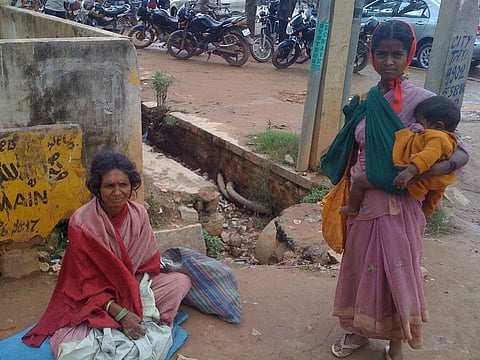

States such as Bihar, Uttar Pradesh, and Madhya Pradesh are keeping India backward. This was one of the most straightforward assertions that NITI Aayog CEO Amitabh Kant has made in the recent past. On April 23, while speaking at the first Khan Abdul Gaffar Khan Memorial Lecture at Jamia Millia Islamia University, Kant said, "Eastern part of India particularly states like Bihar, UP, Chhattisgarh, Madhya Pradesh and Rajasthan is keeping India backward, especially on social indicators."
He was speaking on ‘Challenges of Transforming India’ when he mentioned that the southern and western part of India are doing reasonably well and growing rapidly. But despite this, the country, according to him, has performed poorly on human development index. While Kant’s statement ruffled quite a few feathers, one cannot deny that social indicators in these states are far worse when compared to national average.
In fact, given the population of these states and the magnitude of backwardness, it is only fair to suggest that lack of development in these five states is holding the world back.
Consider this. NITI Aayog has recently completed a baseline ranking of 101 'aspirational' districts—a euphemism for backward districts. While we can contest Mr Kant’s claim that this is a 'legacy issue' and say that the issue is governance, we have to agree with him when you see that 44 out of these 101 districts are in these five states alone. These districts were ranked based on 49 indicators across five sectors: health and nutrition, education, agriculture and water resources, financial inclusion and skill development and basic infrastructure. These parameters are almost similar to the 17 sustainable development goals that the world wants to achieve by 2030.
In this context, it would be interesting to see how these five states in India are stonewalling progress made towards achieving SDGs.
Poverty
With a population of more than 508 million, Bihar, Uttar Pradesh, Rajasthan, Madhya Pradesh and Chhattisgarh are collectively larger than Russia and US. In fact, more than 70 per cent of Europe’s population resides in these four states. But the states are not able to reap demographic dividend because at least 28 per cent (140 million) of their total population is living below poverty line. This is more than 18 per cent of the world’s total population (767 million) living below poverty line.
Drinking water and sanitation
According to a 2014 report of the United Nations, out of the world’s one billion people defecating in the open, 60 per cent live in four states of India—Bihar, Uttar Pradesh, Odisha and Jharkhand. Compared to other states, progress here is the least under Swachh Bharat Mission. Uttar Pradesh, the most populous state in the country with 242 million residents, has only 64.7 per cent toilet coverage in rural areas. In the urban areas, the toilet coverage is just 10.67 per cent. In Madhya Pradesh, the third most populous state, the urban toilet coverage is 56 per cent. Both Uttar Pradesh and Madhya Pradesh are well behind at least 20 other states that have toilet coverage of between 60 per cent and 100 per cent.
India has 63.4 million people with no access to clean water, according to Wild Water, State of the World’s Water 2017 report by WaterAid. This is greater than the total number of rural people without access to clean water in Tanzania, Kenya, Bangladesh and Afghanistan—which are among the world’s worst countries for rural water access. Out of 63.4 million, about 27 million are tribal population that does not have access to clean water. The five states, mentioned by Mr Kant, share a large chunk of tribal population in the country.
Health and well-being
According to WHO, the infant mortality rate (IMR) has decreased globally from an estimated rate of 64.8 deaths per 1000 live births in 1990 to 30.5 deaths per 1000 live births in 2016. Annual infant deaths have declined from 8.8 million in 1990 to 4.2 million in 2016. When one looks into the National Family Health Survey data, it becomes evident that Uttar Pradesh and Chhattisgarh have not made much progress since 1990. Their IMR stands at 64 deaths per 1000 live births and 54 deaths per 1000 live births respectively. This is even higher than the African region (52 per 1000 live births). Under-five mortality rate is even worse, with Uttar Pradesh, Madhya Pradesh and Chhattisgarh registering 78, 65 and 64 deaths per 1,000 respectively.
Under such circumstances, the current dispensation, instead of making ‘BIMARU’ states a legacy issue, needs to think through its policies that do not just look at GDP, but also the factors that contribute to GNH—Gross National Happiness.